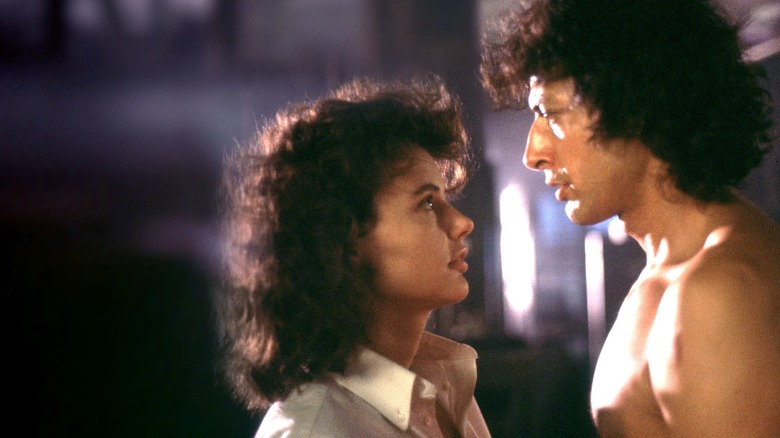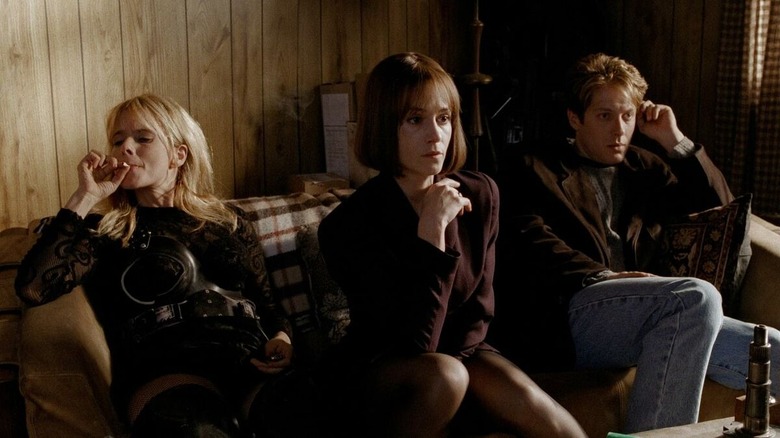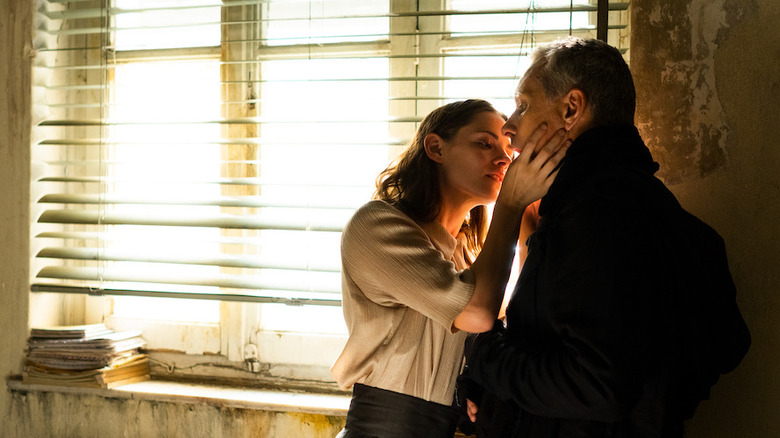David Cronenberg Has A Simple Philosophy When It Comes To Working With Actors
Some of the best filmmakers of all time are known for being total control freaks. "The Shining" director Stanley Kubrick is notoriously dictatorial on set, while David Fincher has a reputation for making actors shoot the same scenes over, and over, and over again. One cinematic master who would strongly disagree with this approach is David Cronenberg, known for body horror cult classics like "The Fly" and "Videodrome."
Cronenberg has directed household names like Debbie Harry of "Blondie," Ralph Fiennes, best known for "Schindler's List," and Jeff Goldblum, who went on to star in blockbusters like "Jurassic Park." This is no accident — the director picks actors that he is confident will do his work justice. The acclaimed filmmaker described his directorial approach very simply: "get good actors and let them be good," he said at an AFI event. He went on to add that filmmaking is collaborative in essence, that no one director will be "superb" at everything from the score to cinematography, and that it is necessary to "allow people to help you" and, most importantly, to "let your actors help you."
Actors can be collaborators
This was not always Cronenberg's approach to filmmaking, as he explained in the video. In making his first commercial film, he thought he had to "manipulate" and "deceive the actor" in order to avoid showing vulnerability. He has since discovered that the actor "can be your collaborator." In fact, he has found that creating a "safe space" for actors to experiment in makes for superior performances. Cronenberg suggested that many other novice directors have the same misconception he did: They think that "you have to be tough" and "willing to humiliate your actor." To that, the filmmaker said "forget it. There are an infinite number of ways to be a director."
Although he encourages the actors to take creative liberties, this isn't to say that Cronenberg is entirely hands-off. "A lot of it happens before you get on the set," he explained. Each actor gets an intensive run-down on their character prior to shooting, arming them with an arsenal of background knowledge to bring into their performance. In this way, the director is able to provide his actors a deep understanding of his work while allowing them to take the reigns in the performance itself, even guiding Cronenberg's camera to the point that it feels to him "almost like a documentary ... like I'm shooting something I've discovered."
An approach as unique as this one creates a very casual and free-flowing onset dynamic, imbuing the film with a natural feel. Everything in a Cronenberg film is surreal and over-the-top, even campy, but it comes from a very human place. The characters act from a genuine place of hysteria or perversion, making their deviances all the more terrifying. The car wreck victims in "Crash," for example, make a deeply unnatural perversion appear authentically arousing.
Making movies should be joyful
Viggo Mortensen, who first worked with Cronenberg on his 2005 film "A History of Violence," collaborated with him again in "A Dangerous Method" (2011) and again in "Crimes of the Future" (2022). Mortensen is responsible for some of Cronenberg's most unsettling roles, and yet he described working with the director as being full of "joy," "fun," and "playfulness" in an interview with TIFF. Mortensen and other actors are attracted to his projects because he believes that making films "can and maybe should be fun ... no matter how complicated or disturbing any script or scene might be."
This tonal balance of "playfulness" and discomfort ultimately translates to the films themselves, which are typically coated in a layer of irony and levity. The director's outlook is both fun-loving and curiosity-driven. Mortensen describes Cronenberg as being motivated by "the joy of acquiring knowledge," and finds this joy at the core of all of his films as well as his creative approach. The director isn't aiming to "do something different" for the sake of being different, Mortensen adds. Instead, he is driven by a desire "to learn something else," something that has not yet been captured on film. This outlook translates into the finished product and attracts both audiences and collaborators alike.


